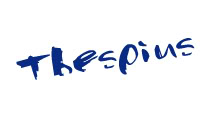
You’re the one who sits in front of your computer. You’re the one who has to look at the back of your toon’s head all night (or day). You’re the one who has to put the gold into gems, enchants, and glyphs. You’re the one doing the necessary rep grinds. Most importantly, you’re the one paying $15 each month to play the game you enjoy.
Hence, you’re entitled to play how you want to play, right? Keep in mind that it doesn’t mean people are always going to want to play alongside you. If you’re a chain-pulling DPS Death Knight, it might be tough for you to find dungeon groups. If you’re a mage who is trying to mass-bandage people in battlegrounds instead of DPS, expect to get laughed at. Most of us strive to play our characters in a way that helps and benefits a raid, battleground, or arena team. We’re going to look at things from a raiding perspective.
If you’re an aspiring raider, two guys named “Min” and “Max” always come into the conversation pretty quickly. Wikipedia describes this practice as:
…the practice of playing a role-playing game, wargame or video game with the intent of creating the “best” character by means of minimizing undesired or unimportant traits and maximizing desired ones.
Obviously, this doesn’t only have to do with spec, but also relates to gear, gems, enchants, and spell/skill rotation. How beneficial is it to tweak all of these to get the most desired output from your character, whether it be healing, DPSing, tanking, etc?
PvP vs. PvE vs. Hybrid
If you really want to be effective in a raiding environment, leave your PvP spec, or your “hybrid” spec at the door. Although it is perfectly viable to heal in a PvP spec (I usually do it after Wintergrasp), you’re lacking in true PvE potential if you’re not specced properly for raiding. Taking talents such as Improved Ghost Wolf or Reflective Shield are not effective for raiding in the slightest. The points you spend in talents like those are much more useful in talents that boost your raiding skills/spells.
Granted, you may be able to find yourself in a guild that doesn’t mind you being a hybrid spec. Perfectly fine. Just don’t be too upset if your raid spot is handed over to someone with a pure spec. Keep in mind that the effort you don’t put into raiding has to be made up by the other raiders. In effect, you run the risk of making their job harder. It can be handled for a while, but there’s an often-reached breaking point.
Rusty Cookie Cutter
The term “cookie cutter” usually refers to a globally accepted spec to accomplish a certain job. PlusHeal.com, TankSpot.com, OutDPS.com, and WoWWiki.com are all great places to get yourself a “cookie cutter” spec for whatever role you’re filling.
I usually reserve using a spec like those for when I’m first learning a new playstyle. As a Discipline Priest, I’m not too familiar with Holy. I lined myself up a “cookie cutter raid healing” spec, and learned the mechanics of that style that way. The more I get comfortable with the abilities, buffs, debuffs, etc., the more I can tweak the spec to what I need, as well as what the raid needs.
If you’re joining up with a raiding guild that’s new to you, take a look at what kind of role you’re going to be filling. If it’s foreign to you, start with a “cookie cutter” and go from there.
Juggling Stats
At a certain point in gearing, you reach a point where you can start adding on a certain stat over another. For tanks, it’s the defense cap. For DPS, it’s the hit cap. (Remember the expertise cap, too.) For a healer, this point basically involves being able to keep your assignment up comfortably without running out of mana. From there, you can stack:
- Haste – Faster heals
- Spellpower – Consistently bigger heals
- Critical Strike – Chance for bigger heals / Chance for bonus procs
- Mana/Mana Regen – Longevity
Each method serves a purpose. Whichever path you choose, you essentially keep the minimum amount of everything else to function as a healer, and maximize what your goal is. If you lose your ability to keep a target up or sustain mana in a fight, you’ve “min’d” too much.
The Good
If you min/max correctly for the role you’re filling, then you’re incredibly good at your job. If you’re a tank-healing Discipline Priest in consistently short fights, and you gem into a higher Critical Strike Rating, then Inspiration and Divine Aegis are gonna stay up on the tank most of the time, making the other jobs easier. If you’re a Resto Shaman healing the raid with a lot of AoE damage, and you gem for Haste, then you’ll be firing Chain Heals off like mad.
It also makes it easy to judge your gear upgrades. You know what you’re aiming for, and you know what stats you don’t really need to focus on. In fact, you may have some stats you may be able to start scaling back on to accomplish your goal.
The Bad
You go too far, and you lose versatility. If you’re gemmed out for big heals, but don’t have longevity, you’ll be tapping out quickly. If you’re stacking mana, but don’t have a lot of spellpower to back it up, you’re going to have a tough time lending a hand in short fights that pack a lot of punch.
A lot of us know the value of being able to think on your feet. A good raider needs to be able to pick up the slack when someone goes down. If you’re a one-note player, you’re going to have a tough time switching around. A raid leader needs to fill specific roles in a raid, but he/she also needs people that can adapt if circumstances change.
Thes’s Solution
Staying within the role of your spec, do what you can to make yourself a well-rounded player. As a Discipline Priest, my primary role is to keep the tanks alive. However, if my target isn’t taking any damage, I’ll throw some HoTs and Flash Heals on the raid to help everyone else out. It would be unwise of me to try to work my spec and gear to be a full-blown raid healer. It’s a waste of my talents and spells, but that doesn’t mean I can’t help out when needed.
What do I do? I hit a point where I got comfortable with my mana pool and regen. I could easily get through longer fights with my mana cooldowns (and keeping up my end of the healing). I started swapping out my Brilliant King’s Amber gems for Luminous Ametrine gems. This lets me keep my mana efficiency while upping the power of my heals.
If you need something more specialized for a long fight or for nuke heals, start building an alternate set of gear that’s more gemmed/enchanted for the task. With all of the options for getting gear out there, it shouldn’t take that long to build a “special set”. It’s an easy way to avoid being a one-trick pony.
Remember: Raiding is a team effort. You have to put a lot into it if you want to get a lot out of it. Cutting corners with spec/gear, or maxing TOO much of a certain stat can runs the risk of putting you on the standby list real fast.

Follow me on Twitter: @Thespius







